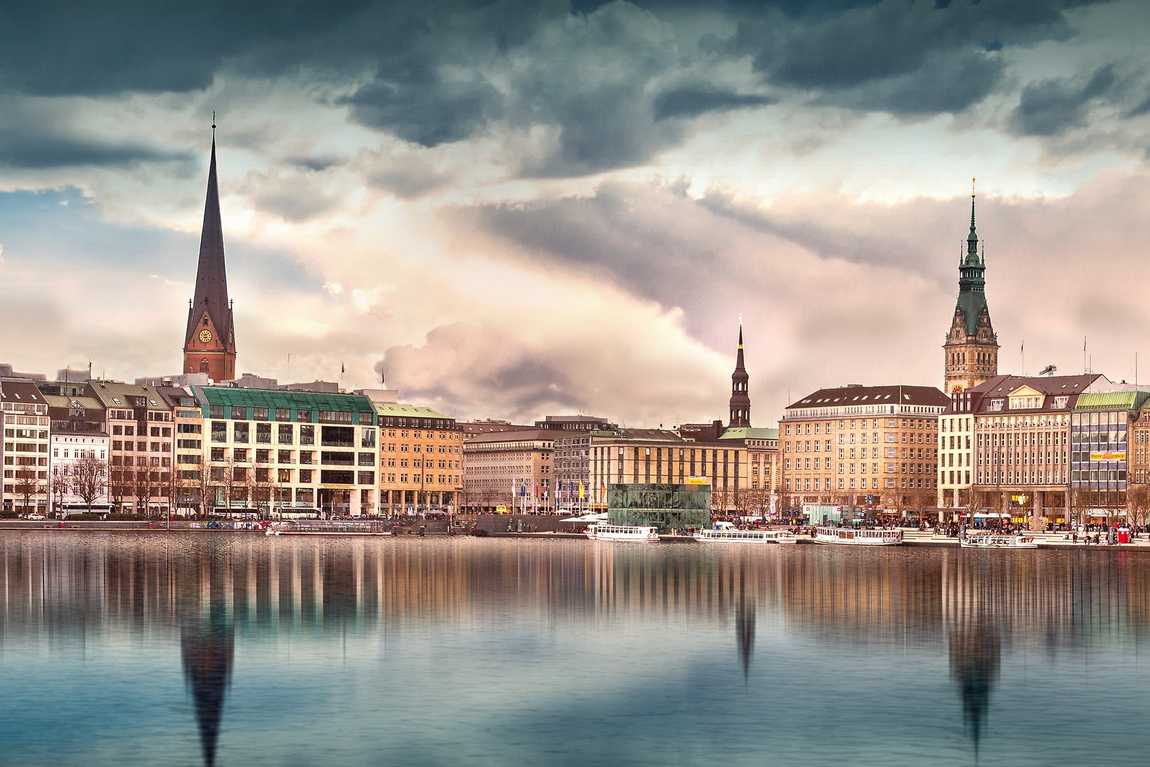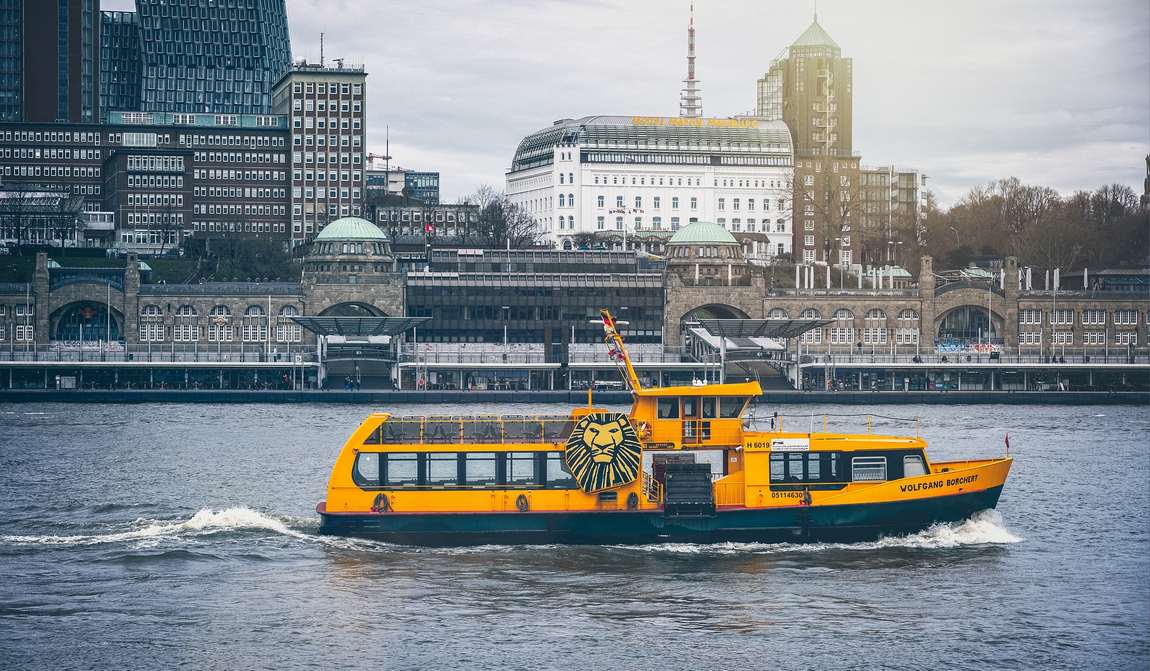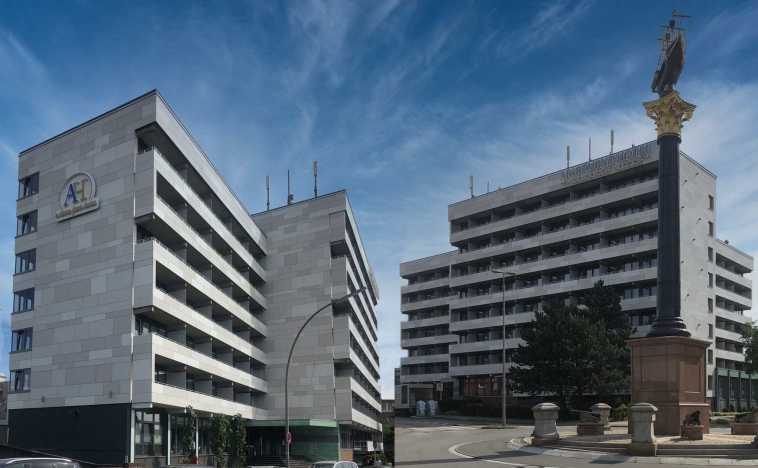Germany's second-largest city, a major port, the 'gateway to the world', the Free and Hanseatic City of Hamburg — it's a big name, but it's true. But it's also true that it's a friendly, clean, green city, full of museums (including children's museums) and that a holiday with children in Hamburg is an unexpectedly colourful and memorable experience.
There is a belief that if you toss a coin from the banks of the Elbe River and it hits one of the piles in the harbour, you'll definitely come back to Hamburg. We suggest you practise before you go: a family holiday in Hamburg is something you'll want to do again.
Hamburg on the map of Germany
The city of Hamburg is located in northern Germany, on the banks of the River Elbe, approximately 110 km from where the Elbe flows into the North Sea. With an area of over 750 square kilometres and a population of over 1.7 million, Hamburg is the leading non-capital city in the European Union. Hamburg is 292 km from Berlin, 400 km from Düsseldorf, 425 km from Cologne and 495 km from Frankfurt.
A fortress called Hammaburg was built on the site of Hamburg in the 8th century. The fortress was soon demolished, but the name remained. Hamburg was already known as an important port in the 12th century. Today it is one of Germany's three city-states and the country's second largest city.
Hamburg for Kids

Hamburg is a city of bridges, sailors and millionaires. But if you go through the rest of the alphabet, the city can be described even more precisely.
R — Road. The transfer to Hamburg is not at all memorable because it takes so little time. Well, everyone knows about the perfect quality of German motorways (if you're going to drive).
H — Hotels. Good quality and comfortable, regardless of their star rating. They don't offer entertainment, but they have everything you need to relax with your child after the excursions. If you are travelling with an infant, a cot will be provided in the room.
M are Museums. Adult, children's, unusual, frightening, provocative, but always promising new discoveries.
Hamburg is home to one of the best children's museums in Germany. Unlike today's popular experimentariums, at KLick children are surrounded not by the future, but by the past.
E is for Entertainment. Hamburg has playgrounds, ropes courses, indoor children's entertainment centres, water parks and amusement parks close to the city.
T — Transport. The metro, suburban trains, buses and ferries run smoothly almost round the clock: you'll have no trouble getting to any part of the city.
C — Cuisine. Holidaying in Hamburg means getting to know the local cuisine, and it's very different from the 'sausage-pork knuckle-sausage' set. And we assure you, no child will refuse to eat Hamburg's Rode Grütt.
W is the Weather. The weather is overcast, to be precise. There are more clouds in the sky than sunshine, and rain pours down on the city even in winter. Make sure you bring umbrellas or mackintoshes.
A for Architecture, B for Business, W for Wind, H for Hansa... A trip to Hamburg with children is easy to add to the list.
Best time to travel

Hamburg's tourist season is a relative term. There are a few months of the year when the number of tourists increases, but there is no time when Hamburg is neglected by travellers.
The most popular time to go on holiday with a child is from May to September and in December. The warmer months are ideal for walking and sightseeing, while in December the lights of the Christmas markets will warm your heart. The best time to visit Hamburg with an infant is in late spring, summer or early autumn. In winter, the city is damp and cold and windy, which is not the best weather for babies.
When planning the best time to visit Hamburg, it's also worth bearing in mind the timing of the festivals. One of them, Harbour Day, is celebrated in May. It's a truly memorable event: where else can you see a tugboat ballet or dragon rowing?
Three times a year, in December, March-April and July-August, the city hosts the Hamburg Dom Fair. Children can enjoy a carousel, rides, a giant Ferris wheel and stalls selling sweets and toys.
And at Christmas, the city is transformed beyond recognition. Fairytale towns spring up in the squares, filled with the delicious smell of baking. Children are entertained not only in the streets but also on the fairytale ships moored on the Alster. There are also ice rinks, festive parades and spectacular fireworks in December.
Weather and climate
Hamburg's climate is Nordic and temperate. Winters without frost, summers without heat, with moderate rainfall. The air in Hamburg is clean all year round — with over 100 parks, it's Germany's greenest city.
The best time to visit is, of course, summer. From June to August, the temperature stays between +22 and +24 degrees Celsius, although the city can experience some very hot or cold days. The only downside to the summer weather is the frequent rain. July tends to be particularly wet.
Summer is considered the best time to holiday in Hamburg with children. We recommend extending this period to May and September, which are warm months with reasonably good weather.
In autumn, the air cools down a little, but there is less rain. In September the thermometer shows +18-19°C, in October +13-14°C and in November +8°C. Nights are also quite cold, with temperatures dropping to around +10°C in September and +4°C in November.
Warm winters are common in Hamburg. From December to February, the thermometer stays between +3 and 5°C, with only light frost at night. If you are planning a winter holiday in Hamburg, pack an umbrella and good shoes: Instead of snow, it rains in Hamburg. You'll need good outdoor clothing for long walks, as Hamburg has a very cold winter wind.
In March, Hamburg's weather resembles winter, but in April the temperature rises to +14 to +15°C, the trees are covered with fresh leaves and it finally rains every day. In May the temperature rises to +19°C and the tourist season begins. By the way, Hamburg has beaches and the Elbe is clean but cold. The city of Hamburg has many sun worshippers on its beaches, but only a few dare to swim: even in summer the water temperature doesn't rise above +18°C.
Food
There is little demand for meals in Hamburg's hotel restaurants. Breakfast is rarely included in the room rate, and children's menus are even rarer (and when they are, they tend to be fast food). Tourists usually explore the local cuisine outside the hotels. And Hamburg's restaurants offer a wide range of tastes — some typical of the whole of Germany and some typical of a small region.
The highlights of Hamburg's cuisine include salted herring Matjes, eel soup Aalsuppe and the unusual dish Birnen, Bohnen und Speck ("pears, beans and bacon").
And you can turn an ordinary visit to a cafe into a feast for sweet tooth, because Hamburg is known for its fabulous sweets: Franzbrötchen sugar puff, spiced biscuits from Hamburgische Braune Kuchen, Käsekuchen curd cake, sumptuous marzipan sponge cake and Rote Grütze, a red-berry sour cream cake served with ice cream, whipped cream or vanilla sauce.

Getting Around
Public transport in Hamburg is an indispensable aid for tourists. All sights can be reached by underground, suburban railway and bus.
Transport in Hamburg runs almost round the clock, is very punctual and the intervals between journeys are short. For timetables, routes and ticket prices, visit the website of HVV, the company that runs the city's public transport system.
Underground and train services stop at night between 01:00 and 04:30. Buses also run at night, with around 30 night routes serving all parts of the city. Hamburg's integrated transport system also includes ferries. For tourists, this is more of a sightseeing and walking tool and should not be dismissed out of hand. The ferries run on 6 routes past the Fischmarkt, the Dockland shipyard, the Oevelgönne museum harbour and other points of interest in the city.

All forms of public transport are subject to a single ticket, the cost of which depends on the length of the journey and the zone in which you are travelling. Hamburg and its suburbs are divided into five zones (or rings), with most attractions located within zones A and B.
A day ticket for travel within zones A and B costs €3.60 for an adult and €1.30 for children aged 6-14. A day pass for zones A, B and C costs €8.40 (there is no separate pass for children). It is also possible to buy a day pass for one adult and three children aged 6 to 14. This costs €7.10 for zones A, B and €11.10 for zones A, B, C, depending on the zone.
Tickets are sold at the driver's desk, from vending machines and at customer centres. It is very convenient to use e-tickets on your smartphone.
If you are planning to do a lot of sightseeing, it makes sense to buy a Hamburg Card. The card is a travel pass for all public transport and gives you up to 50% off admission to some museums. The card is valid for 1 day and costs €11.90, 2 days — €20.90, 3 days — €29.90, 4 days — €39.90, 5 days — €46.90. The card can be used by one adult and three children under the age of 14 at the same time.
Getting around Hamburg by taxi is also very convenient, but not cheap. The easiest way to find a taxi is at the taxi ranks. Beige cabs with a chequered pattern are also available on the street. All taxis are metered, with the price per kilometre averaging around €3 for the first 5 kilometres and €2 for the next.
 [email protected]
[email protected]























